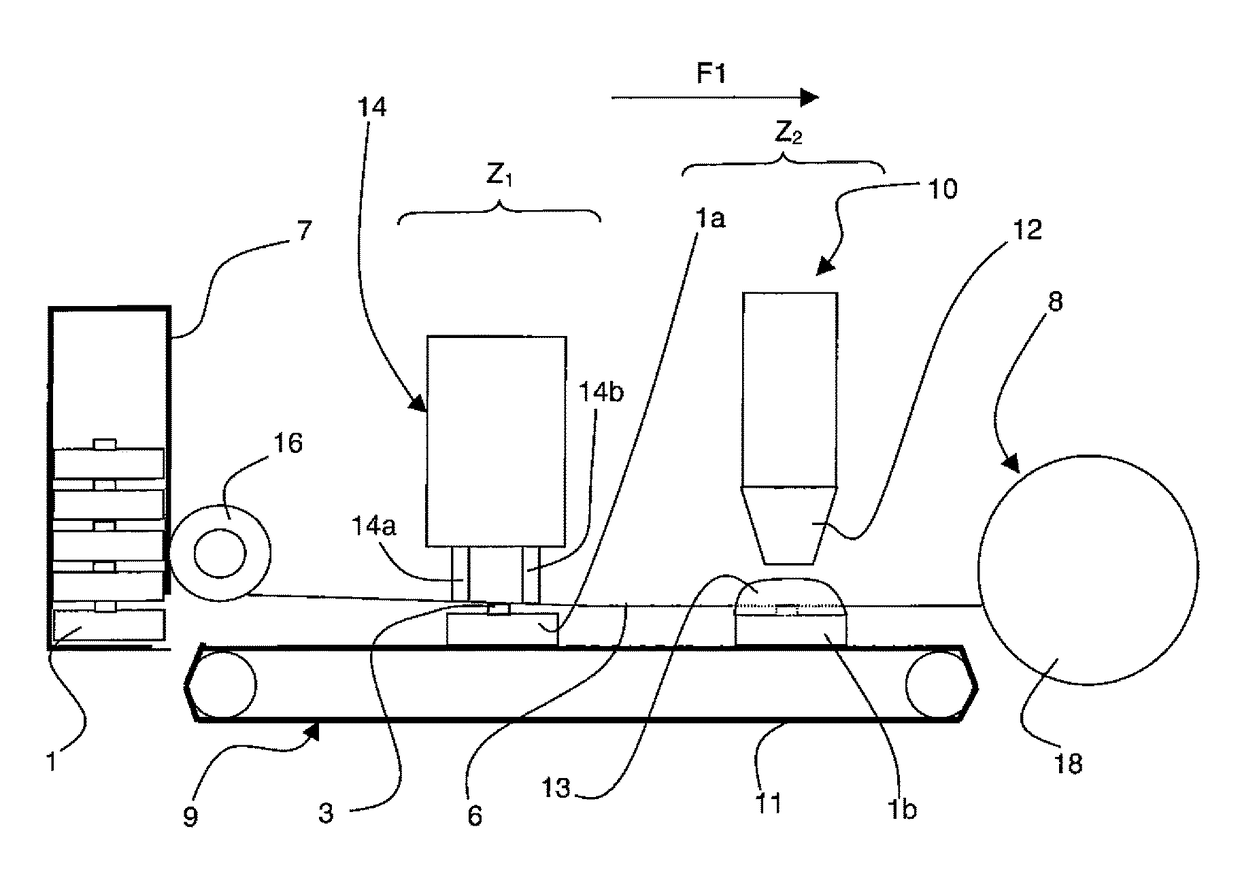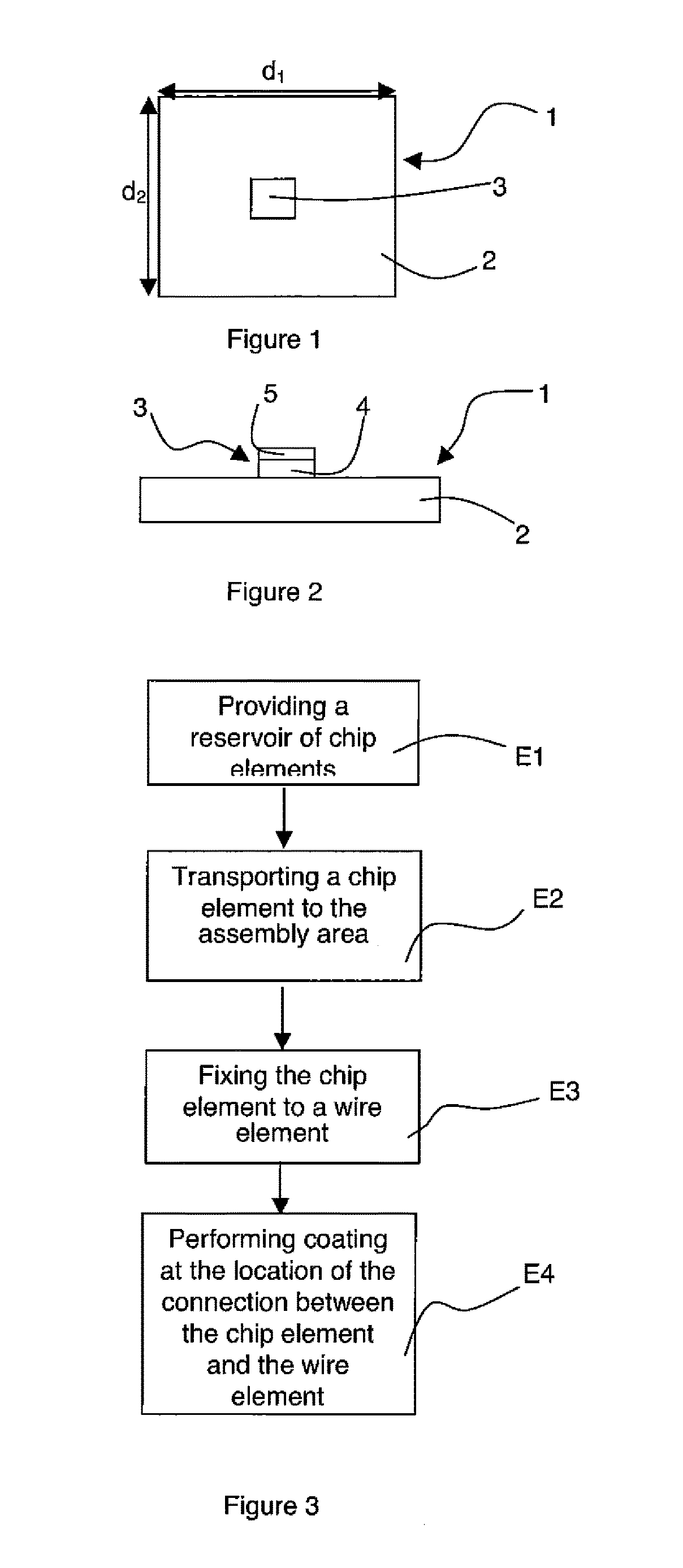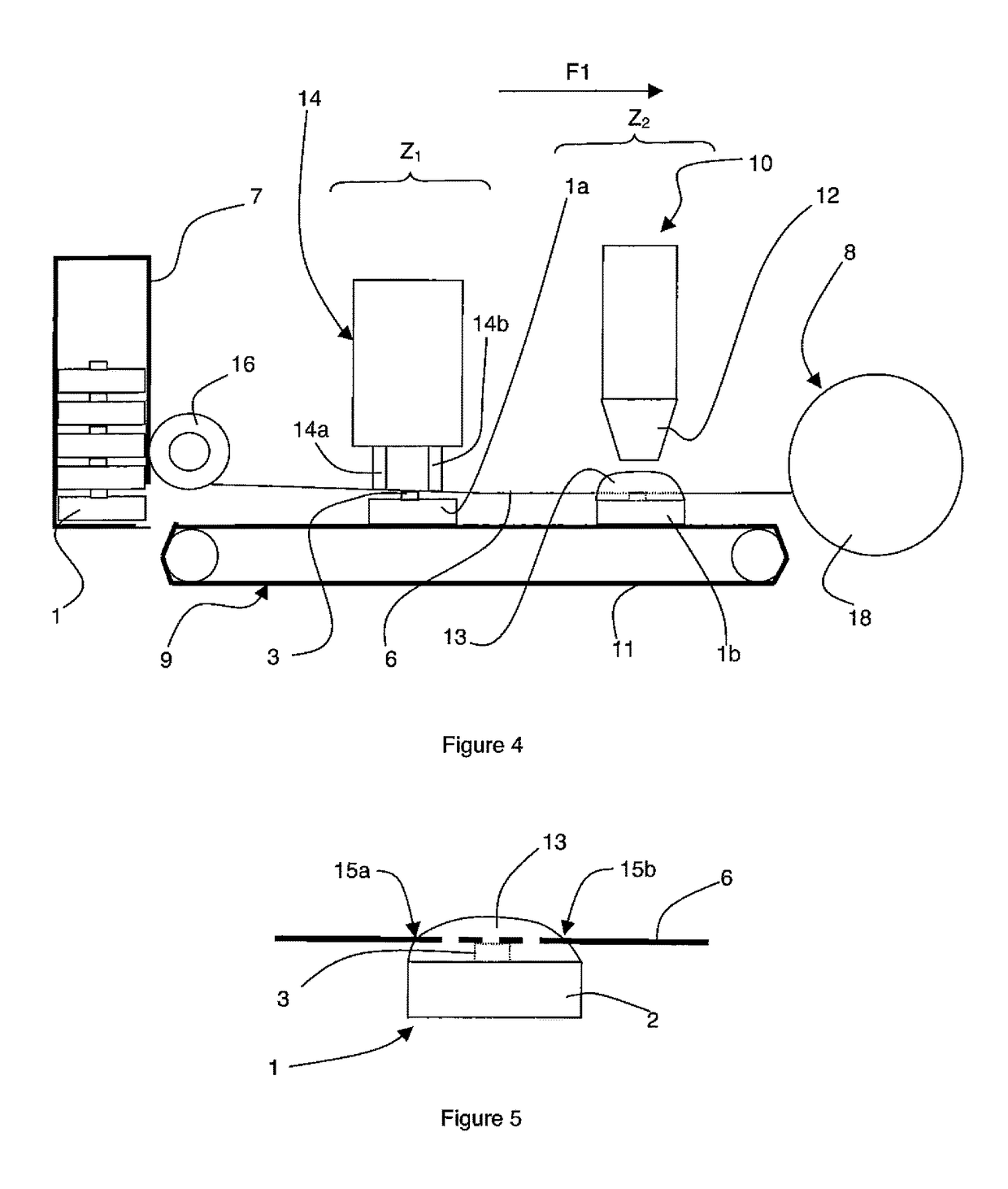Method for assembling a microelectronic chip element on a wire element, and installation enabling assembly to be performed
a technology of microelectronic chip elements and wire elements, which is applied in the direction of basic electric elements, solid-state devices, electric apparatus, etc., can solve the problems of unfavorable flexible structure integration, unfavorable chip element handling and association, and particularly rigid mechanical support, etc., to facilitate the fabrication of a daisy chain and low cost
- Summary
- Abstract
- Description
- Claims
- Application Information
AI Technical Summary
Benefits of technology
Problems solved by technology
Method used
Image
Examples
Embodiment Construction
[0041]As indicated in the foregoing, it is sought to advantageously produce a daisy chain having a base formed by a series of microelectronic chip elements (or at least one chip element) assembly of which is solidified by addition of coating material forming the cover.
[0042]An example of a microelectronic chip element able to be used in the scope of the present invention is visible in FIGS. 1 and 2. Such a microelectronic chip element 1 can comprise a base 2 containing for example the chip or constituting the chip, and a connection terminal 3 advantageously salient from the external surface of base 2.
[0043]According to a particular embodiment, base 2 of chip element 1 is of substantially parallelepipedic shape. Connection terminal 3 is salient from one of the surfaces of base 2, advantageously from a surface called main surface. The main surface is defined as the surface having the largest lateral dimensions d1 and d2, in other words it is the surface having the largest surface area...
PUM
 Login to View More
Login to View More Abstract
Description
Claims
Application Information
 Login to View More
Login to View More - R&D
- Intellectual Property
- Life Sciences
- Materials
- Tech Scout
- Unparalleled Data Quality
- Higher Quality Content
- 60% Fewer Hallucinations
Browse by: Latest US Patents, China's latest patents, Technical Efficacy Thesaurus, Application Domain, Technology Topic, Popular Technical Reports.
© 2025 PatSnap. All rights reserved.Legal|Privacy policy|Modern Slavery Act Transparency Statement|Sitemap|About US| Contact US: help@patsnap.com



